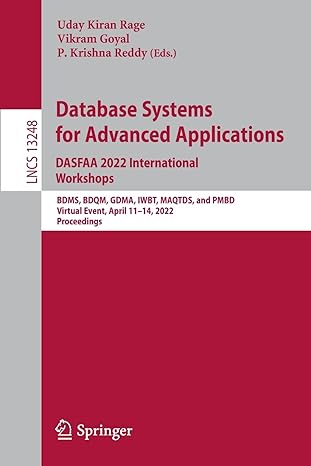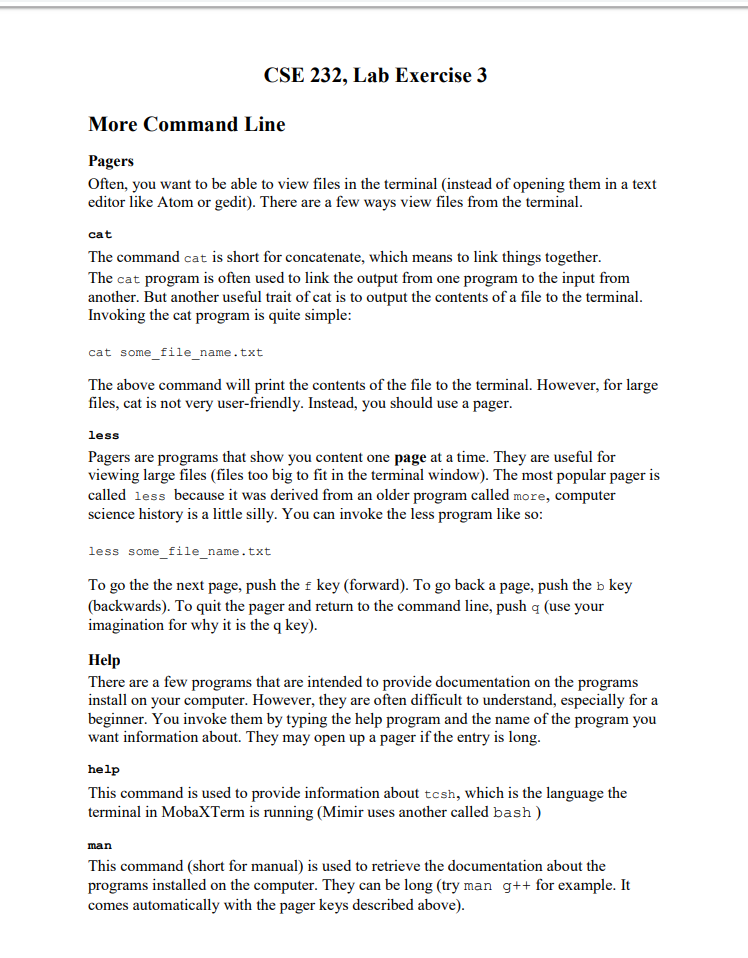
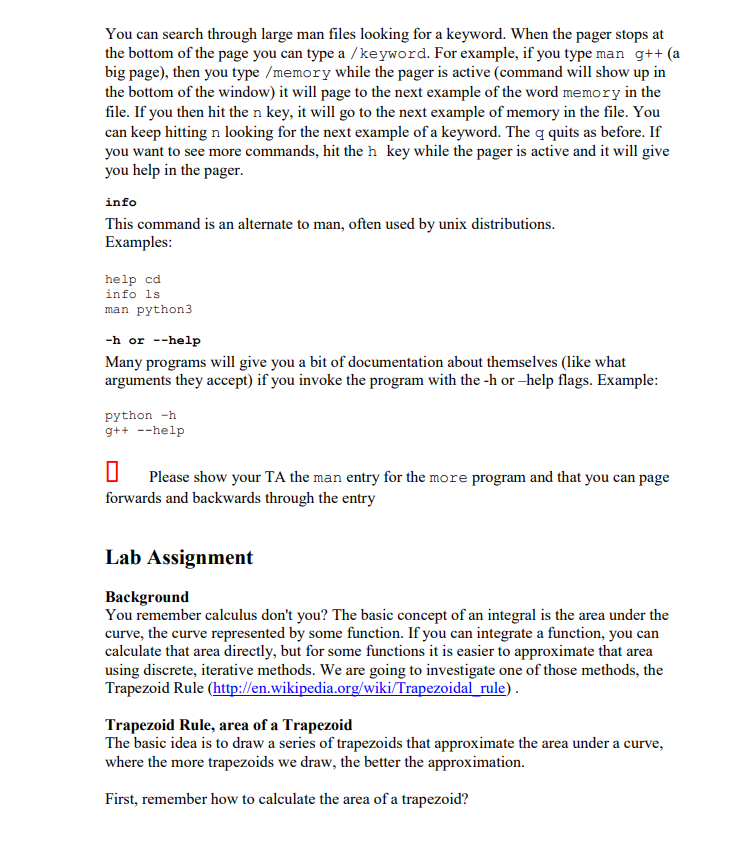
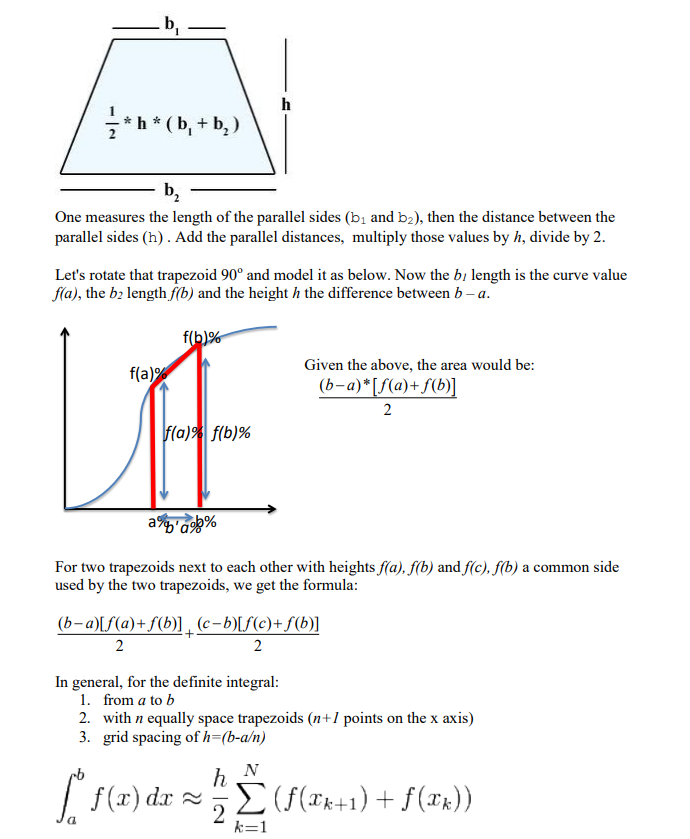
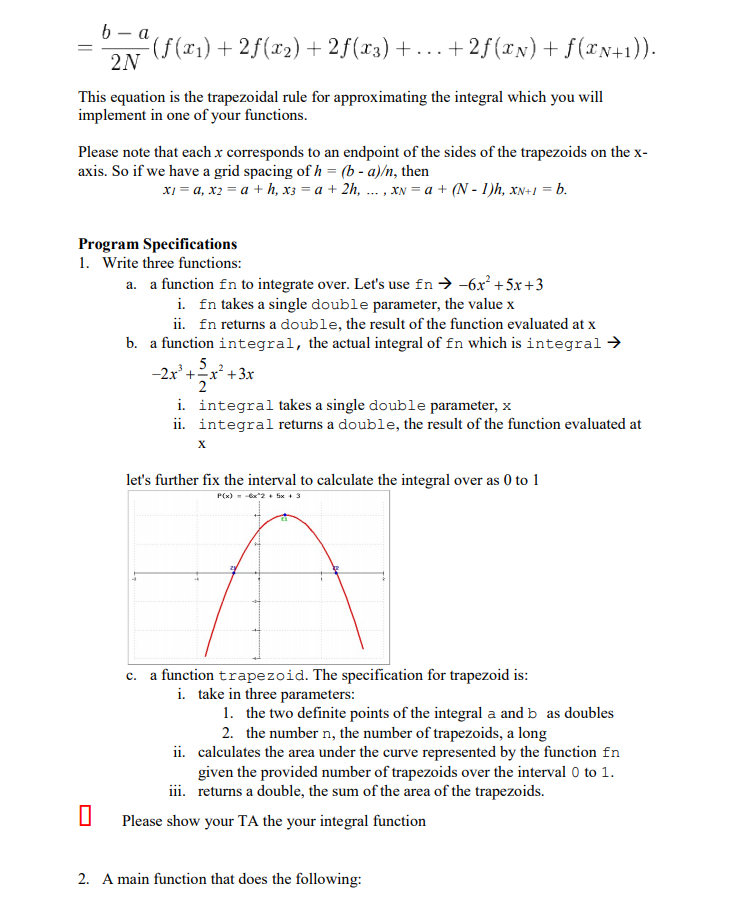
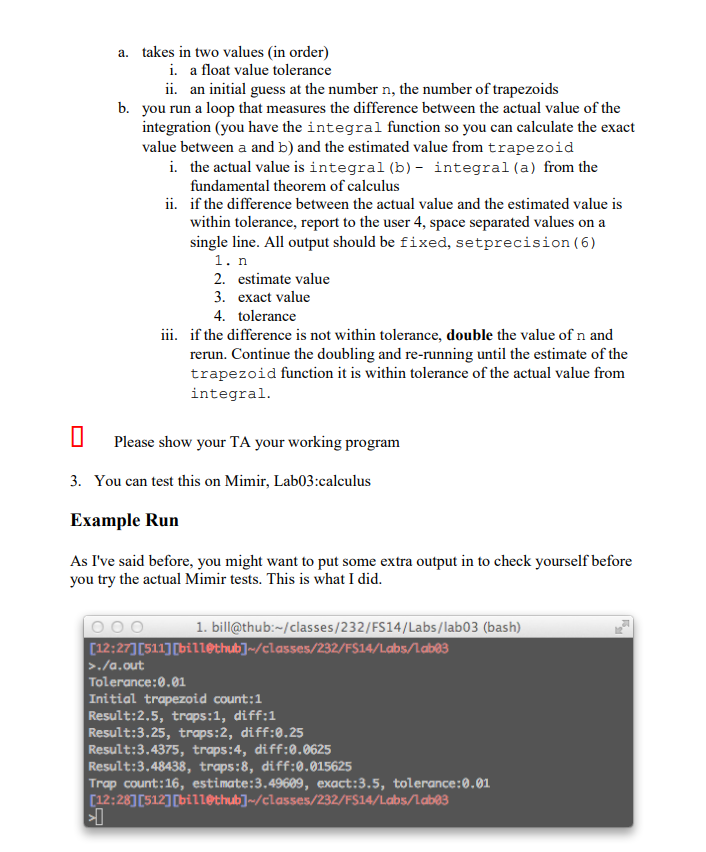 please use c++ to write it.
please use c++ to write it.
CSE 232, Lab Exercise 3 More Command Line Pagers Often, you want to be able to view files in the terminal (instead of opening them in a text editor like Atom or gedit). There are a few ways view files from the terminal cat The command cat is short for concatenate, which means to link things together The cat program is often used to link the output from one program to the input from another. But another useful trait of cat is to output the contents of a file to the terminal Invoking the cat program is quite simple cat some file name.txt The above command will print the contents of the file to the terminal. However, for large files, cat is not very user-friendly. Instead, you should use a pager less Pagers are programs that show you content one page at a time. They are useful for viewing large files (files too big to fit in the terminal window). The most popular pager is called less because it was derived from an older program called more, computer science history is a little silly. You can invoke the less program like so less some file name.txt To go the the next page, push the f key (forward). To go back a page, push the b key (backwards). To quit the pager and return to the command line, push q (use your imagination for why it is the q key) Help There are a few programs that are intended to provide documentation on the programs install on your computer. However, they are often difficult to understand, especially for a beginner. You invoke them by typing the help program and the name of the program you want information about. They may open up a pager if the entry is long hel This command is used to provide information about tesh, which is the language the terminal in MobaXTerm is running (Mimir uses another called bash) man This command (short for manual) is used to retrieve the documentation about the programs installed on the computer. They can be long (try man g++ for example. It comes automatically with the pager keys described above) You can search through large man files looking for a keyword. When the pager stops at the bottom of the page you can type a /keyword. For example, if you type man g++ (a big page), then you type /memory while the pager is active (command will show up in the bottom of the window) it will page to the next example of the word memory in the file. If you then hit the n key, it will go to the next example of memory in the file. You can keep hitting n looking for the next example of a keyword. The q quits as before. If you want to see more commands, hit the h key while the pager is active and it will give you help in the pager info This command is an alternate to man, often used by unix distributions Examples help cd info ls man python3 -h or--help Many programs will give you a bit of documentation about themselves (like what arguments they accept) if you invoke the program with the -h or -help flags. Example python-h g++--help I Please show your TA the man entry for the more program and that you can page forwards and backwards through the entry Lab Assignment Background You remember calculus don't you? The basic concept of an integral is the area under the curve, the curve represented by some function. If you can integrate a function, you can calculate that area directly, but for some functions it is easier to approximate that area using discrete, iterative methods. We are going to investigate one of those methods, the Trapezoid Rule (http://en.wikipedia.org/wiki/Trapezoidal rule) Trapezoid Rule, area of a Trapezoid The basic idea is to draw a series of trapezoids that approximate the area under a curve, where the more trapezoids we draw, the better the approximation. First, remember how to calculate the area of a trapezoid? One measures the length of the parallel sides (bi and b2), then the distance between the parallel sides (h). Add the parallel distances, multiply those values by h, divide by 2 Let's rotate that trapezoid 90 and model it as below. Now the bi length is the curve value fa), the b2 length f(b) and the height h the difference between b - a Given the above, the area would (b-a)*f(a)+f(b) (a) f(b)% For two trapezoids next to each other with heights f/a), f(b) and f(c), f(b) a common side used by the two trapezoids, we get the formula In general, for the definite integral 1. from a to b 2. with n equally space trapezoids (n+/ points on the x axis) 3. grid spacing of h-(b-a) This equation is the trapezoidal rule for approximating the integral which you will implement in one of your functions. Please note that each x corresponds to an endpoint of the sides of the trapezoids on the x axis. So if we have a grid spacing of h -(b - a), then Program Specifications 1. Write three functions: a. a function fn to integrate over. Let's use fn -6x +5x +3 i. fn takes a single double parameter, the value x ii. fn returns a double, the result of the function evaluated atx b. a function integral, the actual integral of fn which is integral > i. integral takes a single double parameter, x integral returns a double, the result of the function evaluated at ii. let's further fix the interval to calculate the integral over as 0 to 1 P(x)-x 253 c. a function trapezoid. The specification for trapezoid is i. take in three 1. parameters the two definite points of the integral a and b as doubles the number n, the number of trapezoids, a long 2. calculates the area under the curve represented by the function fn given the provided number of trapezoids over the interval 0 to 1 ii. iii. returns a double, the sum of the area of the trapezoids. D Please show your TA the your integral functicn 2. A main function that does the following: a. takes in two values (in order) a float value tolerance an initial guess at the number n, the number of trapezoids i. ii. b. you run a loop that measures the difference between the actual value of the integration (you have the integral function so you can calculate the exact value between a and b) and the estimated value from trapezoid i. the actual value is integral (b)- integral (a) from the fundamental theorem of calculus if the difference between the actual value and the estimated value is within tolerance, report to the user 4, space separated values on a single line. All output should be fixed, setprecision (6) ii. 2. estimate value 3. exact value 4. tolerance if the difference is not within tolerance, double the value of n and rerun. Continue the doubling and re-running until the estimate of the trapezoid function it is within tolerance of the actual value from integral. iii. Please show your TA your working program 3. You can test this on Mimir, Lab03:calculus Example Run As I've said before, you might want to put some extra output in to check yourself before vou try the actual Mimir tests. This is what I did. 1. bill@thub:~/classes/232/FS14/Labs/lab03 (bash) [12:27]0511] [billethub]-/cl ./a.out Tolerance:0.01 Initial trapezoid count:1 Result:2.5, traps:1, diff:1 Result:3.25, traps:2, diff:0.25 Result:3.4375, traps:4, diff:0.0625 Result:3.48438, traps:8, diff:0.015625 Trap count:16, estimate:3.49609, exact:3.5, tolerance:0.01 [12:281 05121 [billethub]-/classes/232/FS14/Labs/Aabe3




 please use c++ to write it.
please use c++ to write it.





